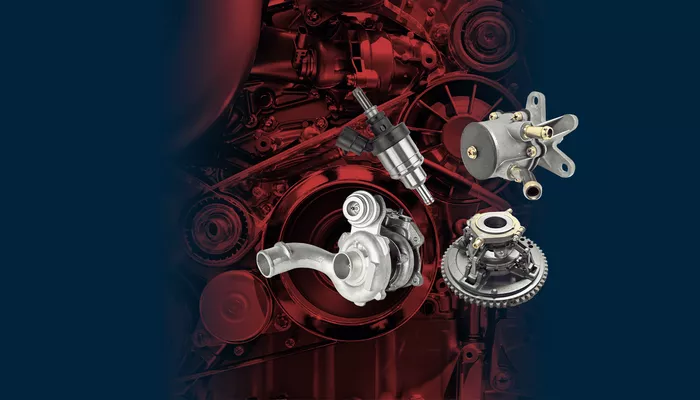In today’s rapidly advancing industrial landscape, heavy-duty gas turbines play a crucial role in energy generation and mechanical propulsion. These sophisticated machines are engineered for robustness, efficiency, and longevity, making them indispensable in power plants, refineries, and other large-scale industrial operations. This comprehensive guide aims to provide a detailed exploration into what heavy-duty gas turbines are, how they work, their key components, advantages, challenges, and future trends.
What is a Heavy-Duty Gas Turbine?
A heavy-duty gas turbine is an industrial-scale machine designed to convert chemical energy from fuel into mechanical energy through a process of combustion and expansion. Unlike lighter models used in aviation, these turbines are optimized for stationary applications where durability, fuel flexibility, and high-efficiency output are paramount. Typically operating at high temperatures and pressures, they form the backbone of electrical grids and large mechanical drives.
The Evolution of Heavy-Duty Gas Turbines
The evolution of heavy-duty gas turbines has been marked by significant advancements in material science, thermodynamics, and aerodynamics. Initially developed during the early 20th century for aircraft, gas turbine technology quickly found applications in power generation post-World War II. With the increasing demand for reliable and efficient energy sources, manufacturers have continuously improved turbine design, leading to today’s models that boast efficiencies exceeding 60% in combined cycle operations.
Key Components of a Heavy-Duty Gas Turbine
Understanding the anatomy of a heavy-duty gas turbine is essential for appreciating its functionality. Key components include:
1. Compressor
The compressor draws in and pressurizes ambient air, significantly increasing its temperature and pressure before entering the combustion chamber. Multi-stage axial compressors are commonly used to achieve the required compression ratios.
2. Combustion Chamber
Here, pressurized air is mixed with fuel (natural gas, kerosene, or other fuels) and ignited. This high-energy combustion process generates extremely hot, high-pressure gases.
3. Turbine Section
In the turbine section, the high-energy gases expand through a series of turbine blades, causing the shaft to rotate. This mechanical energy can be used to drive an electric generator or mechanical equipment.
4. Exhaust
The spent gases are expelled through the exhaust, often still carrying significant thermal energy, which can be utilized in combined cycle plants for additional energy recovery.
How Do Heavy-Duty Gas Turbines Work
The operation of a heavy-duty gas turbine follows the Brayton Cycle, a thermodynamic cycle consisting of four main processes: compression, constant pressure combustion, expansion, and heat rejection. The combination of high compression ratios and elevated turbine inlet temperatures is key to achieving high thermal efficiency.
Applications of Heavy-Duty Gas Turbines
Heavy-duty gas turbines find their place in various sectors:
Power Generation
The primary application is in the generation of electricity. In simple cycle mode, turbines directly drive a generator. In combined cycle mode, they work alongside steam turbines to maximize efficiency by recovering waste heat.
Mechanical Drives
They are used in industries like oil and gas, where they power compressors and pumps essential for operations.
Marine Propulsion
Some naval vessels employ heavy-duty gas turbines for propulsion, taking advantage of their high power-to-weight ratio and reliability.
Materials and Technology Innovations
Modern heavy-duty gas turbines rely on cutting-edge materials to withstand the extreme conditions inside the turbine. Advances in superalloys, ceramic matrix composites, and thermal barrier coatings have been instrumental in pushing performance limits higher. Additionally, technologies like additive manufacturing (3D printing) are increasingly used for complex component fabrication, improving both performance and maintenance efficiency.
Heavy-Duty Gas Turbines vs. Other Turbine Types
It is important to differentiate heavy-duty gas turbines from other turbine types such as steam turbines and wind turbines. While steam turbines harness thermal energy from steam and wind turbines capture kinetic energy from wind, gas turbines use the combustion of fuels. Each type of turbine serves specific roles in energy ecosystems and mechanical applications.
Advantages of Heavy-Duty Gas Turbines
There are several reasons why heavy-duty gas turbines are favored in industrial settings:
- High Efficiency: Especially in combined cycle configurations, overall efficiency can reach above 60%.
- Fuel Flexibility: They can operate on a variety of fuels including natural gas, diesel, and synthetic fuels.
- Quick Start-Up: Gas turbines can ramp up to full load quickly compared to traditional steam plants.
- Compact Footprint: They deliver a high power output relative to their size, optimizing space utilization.
Challenges Facing Heavy-Duty Gas Turbines
Despite their benefits, heavy-duty gas turbines face certain challenges:
- High Capital Costs: Initial installation costs are significant.
- Maintenance Requirements: Operating under extreme conditions demands regular maintenance and inspections.
- Emissions Concerns: Combustion of fossil fuels generates NOx and CO2 emissions, necessitating advanced emission control technologies.
Maintenance and Reliability of Heavy-Duty Gas Turbines
Ensuring the reliability of these machines requires meticulous maintenance practices, including:
Regular Inspections
Visual inspections, borescope inspections, and non-destructive testing (NDT) methods are employed to detect wear and potential failures early.
Performance Monitoring
Utilizing sophisticated sensors and turbine meters ensures optimal performance and timely intervention when anomalies are detected.
Component Overhaul and Replacement
Critical components like blades and combustors are periodically refurbished or replaced to extend the machine’s life cycle and sustain efficiency.
Conclusion
Heavy-duty gas turbines represent a pinnacle of modern engineering, seamlessly integrating principles of thermodynamics, aerodynamics, and material science to deliver massive power outputs reliably and efficiently. As industries evolve and the global community pursues cleaner energy sources, heavy-duty gas turbines will continue to adapt through innovation, playing a pivotal role in shaping the future of energy and mechanical power solutions.

